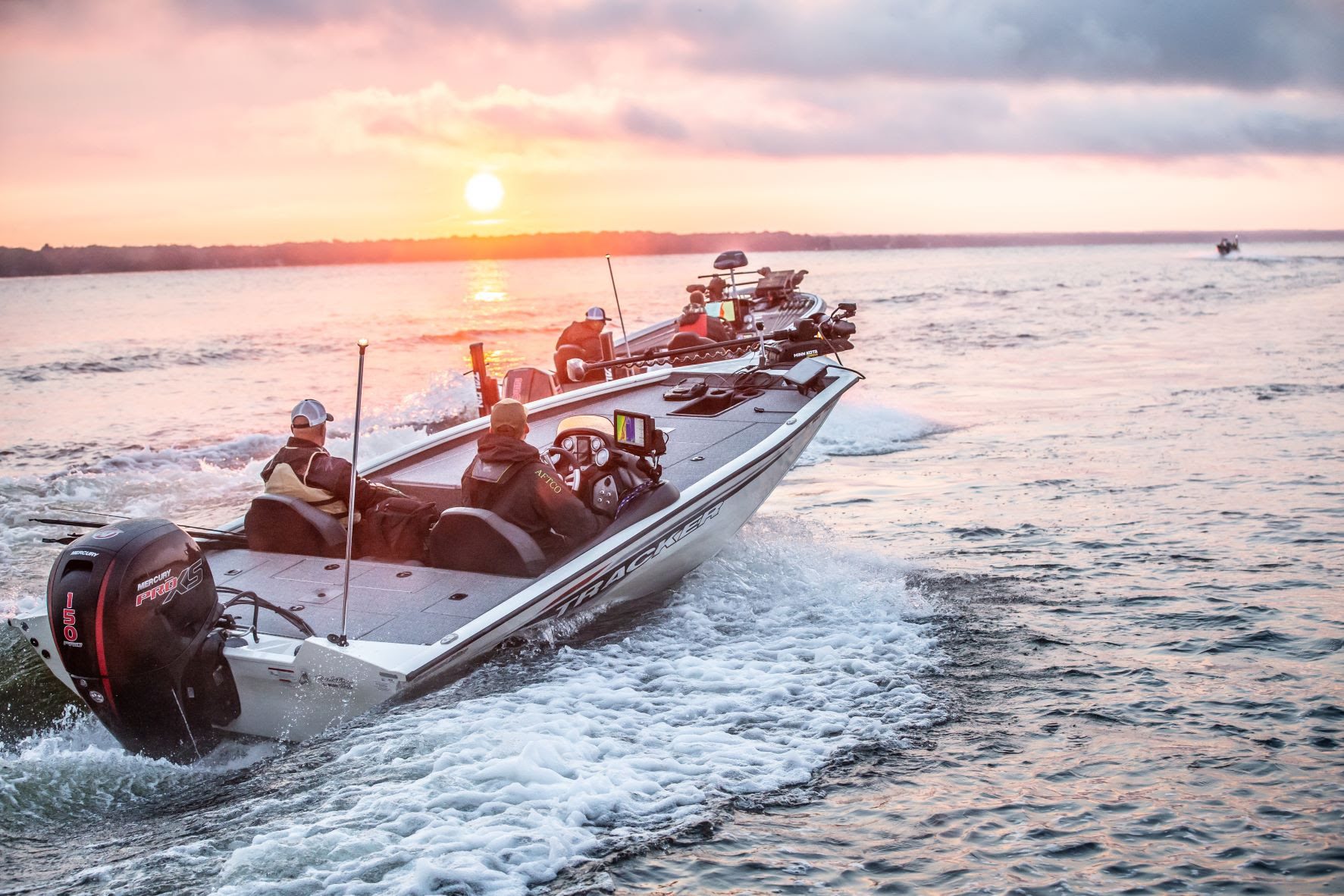New York’s Oneida Lake will host the St. Croix Bassmaster Northern Open presented by Mossy Oak Fishing July 7-9, 2022.
Photo by Shane Durrance/B.A.S.S.
July 5, 2022
Postspawn Smallmouth Will Dominate Bassmaster Open On Oneida Lake
[print_link]
SYRACUSE, N.Y. — If Jonathan Kelley’s recent experience serves as any reference, anglers can expect plenty of plump, well-fed smallmouth and a favorable scenario in which to catch them in the St. Croix Bassmaster Northern Open at Oneida Lake presented by Mossy Oak Fishing.
Competition days will be July 7-9 with daily takeoffs from Oneida Shores Park at 6 a.m. ET and weigh-ins each day back at the park at 2 p.m. Full coverage can be found on Bassmaster.com.
The Bassmaster Elite pro from Old Forge, Pa., is not competing in the event, but with 15 years of fishing experience on the tournament waters, Kelley was happy to share some relevant insights. Starting with lake conditions, his recent trip found the water level right about normal.
“This lake really doesn’t fluctuate that much, but it depends on the spring,” Kelley said. “I know there have been some springs where it’s been severely low or high, but for the most part, it’s almost always normal — there’s not a whole lot of times you have crazy high or low water.
“Conditions are great right now. It’s currently as clear as I’ve seen it, which is good for this time of the year because once you get that summer boat traffic, it does tend to dingy up. So far, it has stayed pretty clean.”
Stretching 21 miles long and 5 miles wide, with 50,894 surface acres, Oneida is the largest lake wholly within the state of New York. That being said, this lake tends to fish small, so finding quality areas that have not seen recent fishing pressure can be challenging.
While he’s not ruling out the occasional late spawner, Kelley foresees a predominantly postspawn event. Bass in this stage are eager to feed up, and a recent seasonal occurrence has helped the fish pack on the bulk.
“Most of the fish are feeding up and they’re in good shape,” Kelley said. “Most of that is due to the mayflies. There was a major hatch when I was there in late June.”
Despite the name, mayfly hatches can occur well into late summer, particularly in Northern climates. Hatching from submerged rock habitat, newly emerging adults float the surface until they fly to nearby terrestrial cover.
At the end of their brief lives, the insects often fall back to the water. Both stages offer bass bountiful feeding opportunities. If tournament anglers find a current hatch underway, it could offer strong morning potential.
“Typically, for anyone that does have a mayfly hatch, it’s going to happen quick and early,” Kelley said. “Generally, they’re going to catch those fish by 10 o’clock. As the day goes on, the fish get off the mayflies.
“There are multiple ways you can catch them. You’ll get them on a topwater or a jerkbait. Some guys like throwing a hair jig and a drop shot. Some guys just throw a small swimbait or a spybait.”
Regardless of the mayfly factor, most anglers will focus their efforts on offshore structure — shoals, humps, high spots and points. The entire lake could be in play, but Oneida’s central to western ends tend to favor this pursuit, while the flatter east end presents more of the shallow, grassy habitat.
“Any mix of rock and grass is key,” Kelley said. “There are not many random roamers on Oneida, so targets are best.
“The strongest pattern going forward will be finding that first, larger group that might gather offshore on some bait, whether it’s on perch fry or just gobies,” Kelley. “The lake has changed a lot over the years, and the diet of the fish has definitely turned more to gobies than anything.
“Over the last three to four years, the goby population has exploded. Now, you don’t go out there and not catch a goby throughout the day.”
Given their goby-influenced bottom orientation, offshore smallmouth will bite drop shots, Ned rigs and Carolina rigs. Swimbaits, jerkbaits and Neko rigs could also play important roles.
“I do see someone getting on an early topwater bite,” Kelley said. “It might not be a limit, but you might catch a few big fish.
“A topwater is a big-fish bait. If you get the topwater bite in the morning, chances are you’re going to catch one of your biggest fish of the day. A big smallmouth on Oneida can weigh up to about 5 pounds, but about 3 1/2 to 4 is more common.”
As Kelley notes, smallmouth will almost certainly dominate this event. But Oneida also holds quality largemouth and someone is likely to find one heavy enough to earn the Phoenix Boats Big Bass award. However, the numbers don’t favor a largemouth-focused game plan.
“The largemouth and smallmouth populations on Oneida used to be a 50/50 split, then it went to 60/40, but smallmouth have taken over,” Kelley said. “Now, it’s more 90/10.
“The lack of good grass and clear water have made Oneida less favorable for largemouth. To go out and target them is pretty difficult, but I expect the biggest fish of the tournament will be a largemouth.”
Anyone targeting largemouth will likely throw a bladed jig, flipping jig, frog or wacky-rigged Senko. Flipping shallow grass could also produce a good bite.
Offering his tournament prediction, Kelley said: “I think it will take 35 pounds for two days to make the Top 10 cut and 56 to win. The winner will have all smallmouth.”
The tournament is being hosted by Visit Syracuse and Onondaga County Parks.

